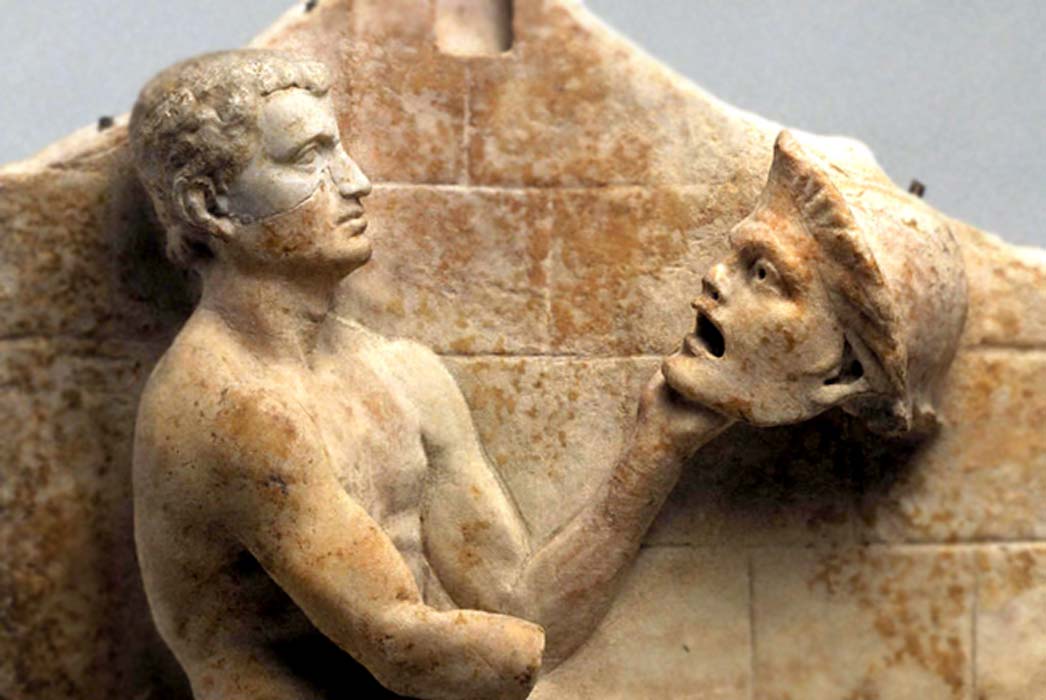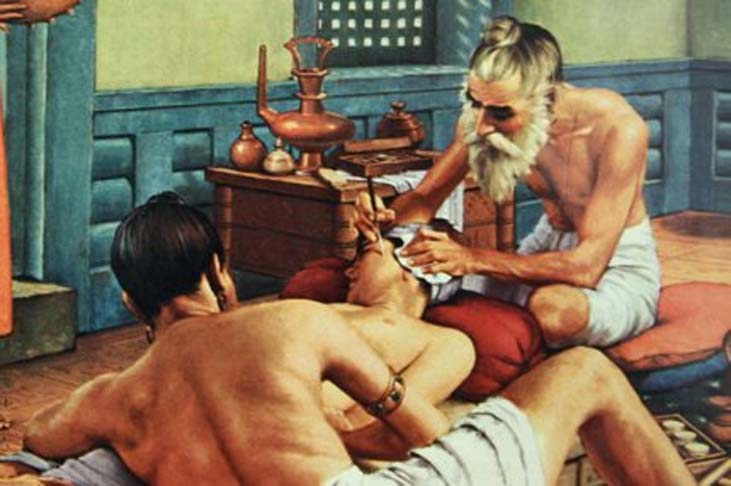
Decapitation? No Problem. The Magic of Restoration: Ancient Myths and Practices of Plastic Surgery
Plastic surgery, not just a modern practice, has always existed and was shrouded in mystery, magic, and eroticism.
An Indian physician named Sushruta, who was widely regarded in India as the “father of surgery”, wrote one of the world’s earliest works on medicine and surgery in the 6th Century BCE. The work included the method of skin grafting, which entail transplanting pieces of skin from one part of the body to another. His treatise also provides the first written record of a forehead flap rhinoplasty, a technique still used today, in which a full-thickness piece of skin from the forehead is used to reconstruct a nose. However, Sushruta was not the first inventor of plastic surgery. The first known record of plastic surgery was in 1213 BCE, when ancient Egyptians tried to preserve the nose of their dead king by surgically inserting bones and seeds into it.

Ancient Surgery (CC BY-SA 4.0)
For centuries, tribes would stretch their earlobes, bind their feet, file their teeth, as well as tattoo and scar their skin; these practices have not lost their cultural powers. Plastic surgery gained momentum and sophistication during the lifetime of the ancient Roman physician Galen (129-216 CE) due to increased obsession with the human body. Galen himself attempted to cure eyes that squinted and drooped. He also performed aesthetic rhinoplasty on wealthy men and women who simply wanted a new nose. However, after the fall of Rome, many of Galen’s medical texts were lost (only 20 out of his 600 books survive) and the practice of plastic surgery went into decline.

Painting of Galen (Public Domain)
In the Middle Ages, despite discussions of proper dental care, surgery in general was deemed to be pagan and sinful because the spilling of blood by a surgeon and the power he held over the body were akin to magic.
Perfection is Divine: The Ancient Legends of Replacements
Before looking at the actual plastic surgery practices, it is useful to know why the ancients would have the need for cosmetic or reconstructive surgery as the subject of restoration of lost or mutilated parts of the body was a lively issue even in the ancient world. The ancient Indian operations were used for those disfigured by disease and by violence or warfare, especially when sword wounds damaged soft tissue from the head and face. In addition, some victims received mutilation in civil feuds, as revenge, or as judicial punishments for serious crimes. Ruthless rulers would deal with threats to their power by mutilating the faces of their opponents, notably by removal of the nose. Such injuries humiliated the victim, equating them with criminals and, most importantly, would leave them defective and handicapped in the afterlife.
The practice may have been widespread, as facial mutilation was common in Chile up to the time of the Spanish colonial period. In Peru, pre-Inca Chimu pottery images placed in the graves of distinguished persons showed evidence of such facial injuries. A Roman fort in Scotland was found to have a collection of human hand and foot bones which were removed from local insurgents to discourage others.




